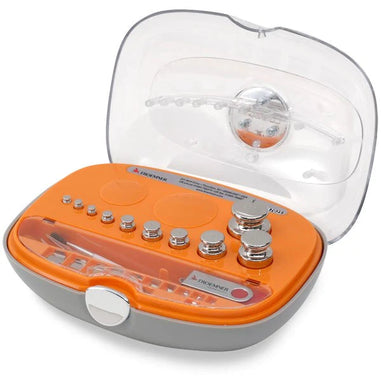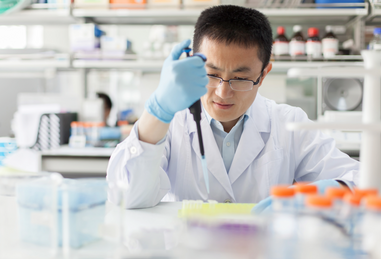- No products in the cart.
In the intricate world of laboratory work, precision is a non-negotiable requirement. Every measurement, every experiment, hinges upon the accuracy of tools employed. One such tool that plays a pivotal role in scientific research is the pipette. From transferring minuscule volumes of liquids to conducting complex assays, pipettes are the workhorses of the lab. However, their accuracy is not a given; it requires a systematic approach called pipette calibration. In this blog post, we delve into the critical significance of pipette calibration in ensuring laboratory accuracy, discussing its importance, methods, and real-world impact on research outcomes.
1. The Foundation of Laboratory Accuracy
Precision and accuracy are the twin pillars upon which successful laboratory work stands. Inaccurate measurements can lead to skewed results, wasted resources, and compromised scientific integrity. Pipettes, designed to handle even the tiniest quantities of liquids, are susceptible to performance deviations over time due to various factors, including regular use, environmental conditions, and wear and tear. Pipette calibration, therefore, becomes the foundation upon which laboratory accuracy is built.
2. The Science Behind Pipette Calibration
Pipette calibration is not a mere routine; it's a scientific process meticulously designed to validate and fine-tune the performance of these instruments. The process involves comparing the actual volume of liquid dispensed by a pipette to the intended volume, typically using gravimetric or photometric methods. This comparison enables the quantification of any deviations and helps determine the necessary adjustments to bring the pipette back to its specified accuracy.
3. Real-World Impact on Research
The ramifications of neglecting pipette calibration reverberate through every facet of laboratory work. In research, accuracy isn't just a nicety; it's the essence of producing reliable, reproducible results. Inaccurate pipetting can introduce errors in assays, affect concentrations, alter reaction outcomes, and compromise the validity of experiments. This can lead to misguided conclusions, wasted resources, and even setbacks in drug discovery, medical diagnostics, and other critical scientific endeavors.
4. Ensuring Consistency and Reproducibility
Reproducibility is the bedrock of scientific research. Precise pipetting is essential to ensure that experiments can be repeated by different researchers and yield consistent results. Pipette calibration guarantees that the volume dispensed is uniform across all pipettes, thereby enhancing the reproducibility of experiments and facilitating inter-laboratory comparisons.
5. Methods of Pipette Calibration
Pipette calibration can be performed using different approaches, each tailored to the specific needs of the laboratory. Gravimetric calibration involves weighing the liquid dispensed, while photometric calibration utilizes the absorbance or fluorescence properties of the liquid. Advanced automated systems and calibration software further streamline the process, enhancing accuracy and efficiency.

6. Calibration Frequency and Documentation
How often should pipettes be calibrated? The answer lies in a well-structured calibration schedule. Regular calibration intervals, based on usage frequency and manufacturer recommendations, ensure that pipettes remain accurate over time. Comprehensive documentation of calibration records is essential for quality control audits, compliance with regulatory standards, and maintaining a historical record of pipette performance.
7. Maintaining Pipette Performance
Pipette calibration is not a one-time event; it's an ongoing commitment to precision. Regular maintenance, proper handling, and adherence to good pipetting practices all contribute to sustained accuracy. Laboratory personnel should be trained in correct pipetting techniques to minimize mechanical stress on pipettes and optimize their longevity.
8. Advancing Research and Innovation
In the fast-paced world of scientific discovery, accuracy drives innovation. By ensuring precise pipetting, researchers can confidently explore new avenues, test hypotheses, and uncover insights that contribute to advancements in medicine, technology, and various fields.
The Benefits of Pipette Calibration
There are several benefits to calibrating pipettes regularly. These include:
- Increased accuracy of laboratory results
- Reduced risk of errors in diagnosis, treatment, and research
- Improved efficiency and productivity
- Increased peace of mind
Conclusion
In the realm of scientific inquiry, precision is non-negotiable. Pipette calibration stands as a beacon of accuracy, illuminating the path to reliable results and impactful research outcomes. From the meticulous methods to the real-world impact, the importance of pipette calibration cannot be overstated. It is the shield that guards against inaccuracies, the assurance that experiments stand on solid ground, and the cornerstone of laboratory integrity. As laboratories continue to push the boundaries of knowledge, pipette calibration remains an unwavering ally, upholding the banner of precision and driving the pursuit of excellence.
For over 40 years, Lab Pro Inc. has been committed to delivering the highest quality lab equipment, scale and pipette calibration services, chemicals, lab balances and scales, lab supplies, and cleanroom PPE apparel to medical device companies and laboratories worldwide. To learn more contact us online or at 888-452-2776.












































